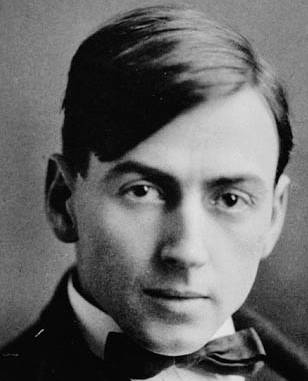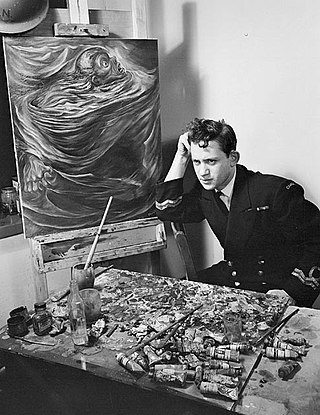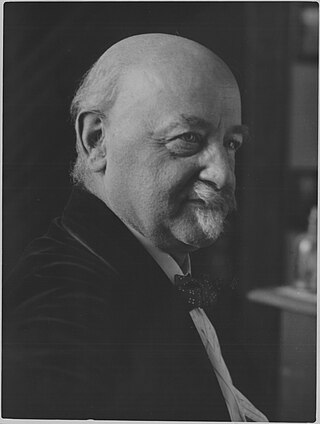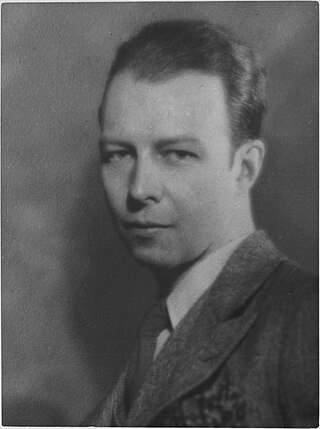
Thomas John Thomson was a Canadian artist active in the early 20th century. During his short career, he produced roughly 400 oil sketches on small wood panels and approximately 50 larger works on canvas. His works consist almost entirely of landscapes, depicting trees, skies, lakes, and rivers. He used broad brush strokes and a liberal application of paint to capture the beauty and colour of the Ontario landscape. Thomson's accidental death by drowning at 39 shortly before the founding of the Group of Seven is seen as a tragedy for Canadian art.

Thoreau MacDonald was a Canadian illustrator, graphic and book designer, and artist.

James Edward Hervey MacDonald (1873–1932) was an English-Canadian artist, best known as a member of the Group of Seven who asserted a distinct national identity combined with a common heritage stemming from early modernism in Europe in the early twentieth century. He was the father of the illustrator, graphic artist and designer Thoreau MacDonald.

Charles Fraser Comfort, LL. D. was a Scotland-born Canadian painter, sculptor, teacher, writer and administrator.

William Cruikshank was a British painter and the grand-nephew of George Cruikshank. He studied art at the Royal Scottish Academy in Edinburgh, at the Royal Academy School in London with Frederic Leighton and John Everett Millais, and in Paris at the Atelier Yvon. His last studies were interrupted by the Franco-Prussian War.

Jack Nichols (1921–2009) was a Canadian artist from Montreal, Quebec. He was a painter and printmaker whose main interest in his art was people in the metropolitan scene. He was called by critics "a chronicler of the human condition" and compassionate in his depictions.

Allan Robb Fleming was a Canadian graphic designer best known for having created the Canadian National Railway logo, designing the best-selling 1967 Centennial book Canada: A Year of the Land/Canada, du temps qui passe, and for revolutionizing the look of scholarly publishing in Canada, particularly at University of Toronto Press.

Charles William Jefferys who signed his name C. W. Jefferys was an English-born Canadian artist, author and teacher best known for his historical illustrations.

Helen Barbara Howard was a Canadian painter, wood-engraver, drafter, bookbinder and designer who produced work consistently throughout her life, from her graduation in 1951 from the Ontario College of Art until her unexpected death in 2002.

The Ontario Society of Artists (OSA) was founded in 1872. It is Canada's oldest continuously operating professional art society. When it was founded at the home of John Arthur Fraser, seven artists were present. Besides Fraser himself, Marmaduke Matthews, and Thomas Mower Martin were there, among others. Charlotte Schreiber was the first woman member in 1876 and showed work in the Society's Annual show of that year.

William Tracy Wallace, known as W. T. Wallace, was a Canadian-English artist and designer.

Tom Thomson (1877–1917) was a Canadian painter from the beginning of the 20th century. Beginning from humble roots, his development as a career painter was meteoric, only pursuing it seriously in the final years of his life. He became one of the foremost figures in Canadian art, leaving behind around 400 small oil sketches and around fifty larger works on canvas.

Spring Ice is a 1915–16 oil painting by Canadian painter Tom Thomson. The work was inspired by a sketch completed on Canoe Lake in Algonquin Park. The completed canvas is large, measuring 72.0 cm × 102.3 cm. Painted over the winter of 1915–16, it was completed in Thomson's shack behind the Studio Building in Toronto. The painting was produced as he was in the peak of his short art career and is considered one of his most notable works. While exhibited in a show put on by the Ontario Society of Artists, the work received mixed to positive reviews. In 1916 it was purchased by the National Gallery of Canada in Ottawa and has remained in the collection ever since.

Frederick Sproston Challener (1869–1959), who signed his name as F.S. Challener, was a Canadian painter of murals as well as an easel painter of oils and watercolours and a draftsman in black-and-white and pastel. He also did illustrations for books and commercial art. He "easily ranks with the first few mural decorators in Canada", wrote Newton MacTavish, author of The Fine Arts in Canada
John Martin (1904-1965) was a British-Canadian etcher and textile printer. His works are in the collections of the Montreal Museum of Fine Arts, the National Gallery of Canada, and the Vancouver Art Gallery.

Robert Holmes, was a Canadian naturalist painter.

J. Archibald Browne was known for the poetic evocation of nature in his paintings. Some called him the Poet Painter of Canada. He was a founding member of the Canadian Art Club (1907) and its secretary.

Harold Beament was an Official Second World War artist with the Royal Canadian Navy and held the highest service rank of any Canadian artist in the Second World War – of Commander. He was noted for the treatment of his depictions in his paintings of landscape and figures in landscape and graphic work, described as "descriptive realism" by some authors.

Lawrence Arthur Colley Panton or as he was known in his professional life L. A. C. Panton (1894–1954) was a Canadian painter and educator.

Charles Macdonald Manly who signed his name C. M. Manly was a lithographer, painter, sketcher and educator in the early days of Canadian art.



















